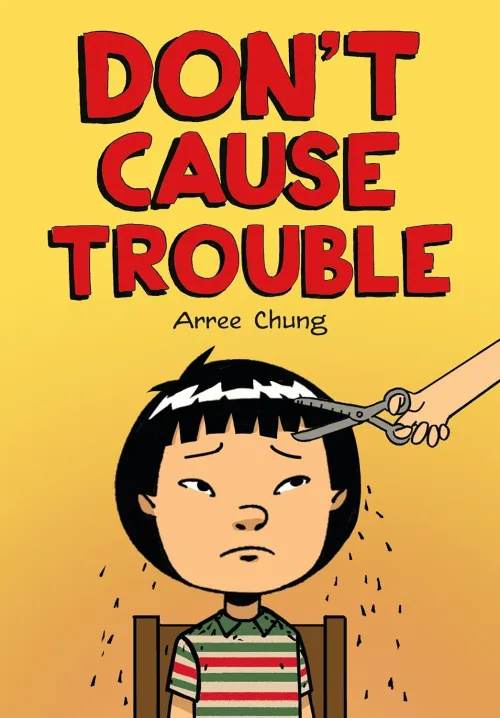Share this Book
Have students reflect on Don’t Cause Trouble through a creative drawing activity that mirrors Ming’s use of art as both expression and escape. Begin by discussing how Ming draws throughout the story, sketching to express emotions he doesn’t always say out loud—like feeling like an outsider, being misunderstood, or wanting to belong.
Ask students to think about a moment in the book where they connected with Ming—maybe when he felt left out or embarrassed, made a mistake, stood up for himself, or realized something important. Have them write briefly about why they chose that moment and how it relates to something they’ve experienced or felt themselves.
Then provide time and materials for students to create a drawing that helps them express those feelings or experiences. Just as Ming drew himself as an alien, students can approach their drawings however they like—using symbols, fantasy, metaphor, or any other style that best visually expresses what they’re feeling. For students who are hesitant about drawing, offer the option to combine simple images with words or create a comic-style panel.
Student drawings are personal. But if students are comfortable sharing their drawings, have them do so in small groups and reflect on how drawing can help us understand both ourselves and the stories we read more deeply.
Questions for Discussion or Reflective Writing
- Why does Ming feel out of place both at home and at school? Why does Ming worry that he will never fit in with his middle school peers? Have you ever felt out of place or different? What did you do with that feeling?
- Why does Ming want a pair of Air Elevates so badly? By the end of the story, do you think the sneakers are still that important to him? What does he learn about what’s really important?
- What do Ming, Vikrum, and Marcus have in common, and how do they help each other? What makes a strong friendship?
- Why does Ming steal? What does this decision reveal about Ming’s priorities, values, and the pressures he faces? How is Ming held accountable for the shoplifting incident? How does the shoplifting incident impact his friendships with Vikrum and Marcus and his relationship with his parents?
- Do you think it’s more important to never mess up or to take responsibility when you do? Why? Can you think of a time when you made a mistake, even though you meant well? What did you do afterward? How do you think people should act when they’ve done something wrong?
Related Resources
Sketch to Stretch from Facing History & Ourselves
How to Draw videos from Arree Chung
More Titles to Try
Stay on top of current education news


